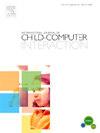高中生构建婴儿gpt:通过构建生成语言模型进行数据实践和解决伦理问题
Q1 Social Sciences
International Journal of Child-Computer Interaction
Pub Date : 2025-08-21
DOI:10.1016/j.ijcci.2025.100769
引用次数: 0
摘要
随着生成语言模型的流行,高中生在日常生活中越来越多地使用它们。虽然目前的大多数研究都集中在检查青少年作为生成语言模型驱动系统的生产性用户,但很少有人关注如何让高中生作为这些模型的设计者来促进对这些系统如何工作的更好理解。在将年轻人定位为计算机系统设计师的丰富研究成果的基础上,我们探索如何支持高中生设计非常小规模的生成语言模型,我们称之为babygpt。通过对三个青少年构建babyGPT剧本生成器的深入案例研究,我们说明了团队如何定义设计问题,开发模型,并在从事AI/ML数据实践和解决伦理问题时进行反思。本文提供了一个案例研究,展示了学生如何在生成语言模型的构建中进行数据实践和道德考虑,并概述了构建活动和工具的未来研究方向,以支持青少年设计生成语言模型。本文章由计算机程序翻译,如有差异,请以英文原文为准。
High school students building babyGPTs: Engaging in data practices and addressing ethical issues through the construction of generative language models
As generative language models have gained popularity, high school students are increasingly using them in their everyday lives. While most current research has focused on examining youth as productive users of generative language model-powered systems, far fewer efforts have focused on how to engage high school students as designers of these models to foster a better understanding of how these systems work. Building on the rich legacy of research that positions youth as designers of computing systems, we explore how to support high school students in designing very small-scale generative language models, which we call babyGPTs. Through an in-depth case study of three teenagers building a babyGPT screenplay generator, we illustrate how the team defined a design problem, developed a model, and reflected while engaging in AI/ML data practices and addressing ethical issues. This paper contributes a case study showing how students engage in data practices and ethical considerations in the construction of generative language models and outlines directions for future research on construction activities and tools to support youth in designing generative language models.
求助全文
通过发布文献求助,成功后即可免费获取论文全文。
去求助
来源期刊

International Journal of Child-Computer Interaction
Social Sciences-Education
CiteScore
7.20
自引率
0.00%
发文量
73
 求助内容:
求助内容: 应助结果提醒方式:
应助结果提醒方式:


